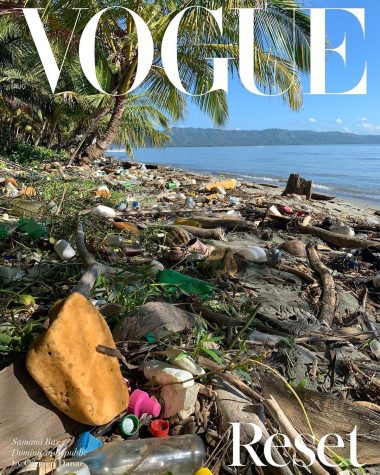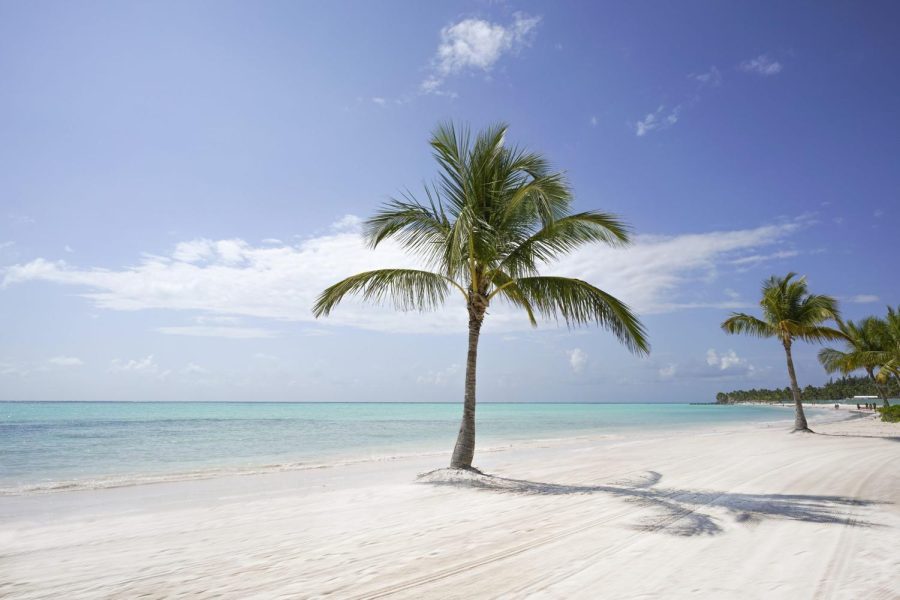Cancel Your Trip To Punta Cana- The Downside of Tourism
November 17, 2022
An upsurge in Tik Tok videos showing tourists vacationing in Hawaii during the summer of 2022 was received with criticism from Hawaiians and those who defend the preservation of Hawaiian land. This criticism is not rare, as it is common for the native people of countries outside of the U.S. to ask Americans to refrain from visiting their countries, because although it may just be a vacation or cheaper rent for us, it means displacement for them. Americans, on the other hand, have repeatedly shown their disregard for countries other than their own, particularly those that their country has exploited and then abandoned when they are in need of assistance.
Tourism is one of the many ways this ignorance is shown, which becomes especially dangerous for countries whose economies are extremely dependent on tourism. One of these countries, known for its beaches and resorts, is the Dominican Republic. The tourism sector has contributed about 15% to 23% (highest includes all tourism-related sectors within the economy, not limited to hotels or restaurants) to the country’s GDP. Although this number makes tourism sound beneficial for a country among those known as less developed in comparison to the U.S., beyond the blind pride that these numbers bring Dominicans, they are problematic. With an average growth of 9% in visitors from outside of DR since 1993, it makes it so that lawmakers shift their attention to meeting the needs of their visitors rather than the needs of those living in the Dominican Republic. This way, contributions from tourism are assured a place within the Dominican economy.
When looking closer at who owns the establishments that attract tourists, it is not surprising to learn that European (especially Spanish) investors and entrepreneurs are the owners of the majority of hotels in the Dominican Republic. As a result of the loans that banks charge investors, as well as investments for large hotels being too costly and unsustainable for Dominican investors, fewer and fewer Dominican investors are at the helm of the DR’s tourist industry.This circumstance, possibly connected to the colonial ties still left over from Spain’s colonization of the island in 1492, is easily comparable to that of Hawaii today.
Like the Dominican Republic, Hawaii is considered one of the most popular tourist spots in the world, but the cost remains harmful. With the careless approval put in place during the ongoing pandemic, allowing those fully vaccinated to skip quarantine and pre-flight testing in 2021, tourism especially became a problem during the pandemic. Given that Hawaii became a part of the United States in 1989 (with little option to do otherwise), the benefits that the United States saw in maintaining tourism in the state despite the negative ramifications of overtourism explain its motive. A surge in the COVID-19 virus hit the state as a result, despite healthcare workers emphasizing the fact that vaccines do not make one immune to the virus. To uphold the prioritization of tourists, many Hawaiian natives were treated like second-class citizens, with a price now placed on the water that they were allowed to use for non-essential activities in Maui that required water usage (such as car washing). If they were caught in one of these activities, they were fined $500. These fines are only one of the disadvantages that people living in Hawaii have to face as a result of tourism. Others include displacement due to spaces being devoted to tourism development, gentrification through vacation rental spots (an example being Airbnb’s), the violation of Hawaiian burials for tourism construction, the whitewashing of cultural traditions (“aloha,” or the fact that tourists were hiking on forbidden areas and touching endangered animals in Hawaii), the scarcity of resources outside of water to provide for tourism and its infrastructure, industrial pollution, and low wage pay in return for the workers keeping tourism afloat. Despite all of these disadvantages, the perfect vacation is the only concern in mind when tourists visit places like Hawaii or the Dominican Republic.
The fact that the Dominican police were instructed to set a curfew for group gatherings while there was no restriction on the number of tourists that could enter the country struck me as ironic when I would learn about how COVID was being managed by the Dominican government through conversations between adults in my family. Even with these curfews (justified by the growth in COVID cases), they result in little impact in lowering cases when tourism is ongoing, and even growing. Overall, though, I observed a pattern among nations with significant investments in tourism: residents in these nations/states are denied access to their basic needs for the convenience of visitors, whose presence is hardly necessary when you consider the toll it takes on those who live there. Locals are being ordered to alter how they live in order to make accommodations for people who are displacing them and depleting their resources.
Another growing issue in the Dominican Republic that comes with tourism is the increase in sex tourism, where female sex workers are usually “young, black, poor, and single mothers” (Leon, 2004). Their clients, on the other hand, tend to be white, wealthy men. Because of the country’s dependence on tourism, it is reluctant to address the issue of young sex workers on the island, whose lack of resources make sex work seem like their most advantageous source of income. Even more harmful, it makes the issue of the exploitation of young women in DR a taboo topic, despite it being a leading issue for young women in the country. Sex tourism is especially popular in common tourist spots such as Punta Cana and Santo Domingo, its capital.
Given that agriculture accounts for the majority of economic activity in the country’s more rural regions, tourism poses a particular challenge for these regions. Agricultural activity in DR in itself is already low, and given the land and resources allotted for these areas, not much attention is devoted to aiding people in these regions. Instead, they are neglected, while being the same ones expected to provide the foods on the plates of tourists in their expensive resorts.
With pictures of pollution on Dominican beaches going viral in 2020, tourism has heavily contributed to the amount of pollution, whether in the form of air emissions, the overuse of water supply used in hotels and resorts, or littering.

In an attempt to shine light on the problem of pollution in DR, Carmen Danae, the Dominican artist who produced the photo for Vogue, received criticism from Dominican people, who said that she chose the wrong side of DR to display to the world and that in return, it could harm its tourism economy.
“The images that do not have plastic are from Los Haitises National Park, and the one that is contaminated, which was chosen by the editor, is from the Bajo Yuna Mangrove National Park, which is adjacent to the Haitises and discharges its waters, and everything they drag, in the bay.
In the publication, she goes on to say that “the vast majority of tourists are taken to the Haitises and, consequently, the Lower Yuna Mangroves, which are equal to or more spectacular than the Haitises, have been completely drowned in plastic and in our garbage.”
Dominicans who take great pride in their tourism industry often fail to grasp that the pollution they want to keep hidden from tourists is actually what it is because of tourists. Of course, this is not to say that tourists are the sole contributors to pollution in DR, but to say that their visits aid the growth of pollution would be false.
We cannot afford to suppress our sufferings so that tourists can enjoy their vacations in a country where people fight to make ends meet for necessities like pencils and notebooks, which are taken for granted in the U.S. Especially now that they are no longer able to afford to live where they once did, we cannot afford to prioritize those visiting the Dominican Republic over those who call it home.
So when Dominican president Luis Abinader is asked what he believes is the main issue affecting the people of his country and is quick to point to the direction of Haitian people (that his government believes justifies the violent removal of Haitian people in DR happening today), the reason he does not point to European investors or non-Black tourists should be easily concluded.
It is easier to blame our downfalls on an imaginary “Haitian invasion” than to hold our leaders accountable and demand better from them. It is for this reason that they weaponize it whenever they know they are at fault. As shown time and time again, it is easier for Dominican leaders with the fear of Blackness than to lead with human rights in mind. In regards to tourism, “better” means alternatives to dependency on tourism that will not, in turn, harm Dominican people, especially those who are of lower-income, Black, and women. “Better” means removing oneself from generational pride and nationalism and being able to recognize when a problem is a problem, even if it is not affecting you directly.
Sources:
Leon, Yolanda M. “DigitalCommons@URI: University of Rhode Island Research.” Site, 2004, https://digitalcommons.uri.edu/.
McDonagh, Shannon. “Hawaii Residents Beg Tourists to Stop Visiting in Post-Pandemic Boom.” Euronews, 22 Aug. 2022, https://www.euronews.com/travel/2022/05/03/hawaiian-overtourism-residents-beg-tourists-to-stop-visiting-amid-post-pandemic-boom.
U, Sunlu. (PDF) Environmental Impacts of Tourism – Researchgate. https://www.researchgate.net/publication/323733792_Environmental_Impacts_of_Tourism.
Dominicantoday. “Vogue Magazine Publishes Photo of Dominican Republic Beach Covered in Trash.” DominicanToday, https://dominicantoday.com/dr/tourism/2020/07/27/vogue-magazine-publishes-photo-of-dominican-republic-beach-with-trash/.



